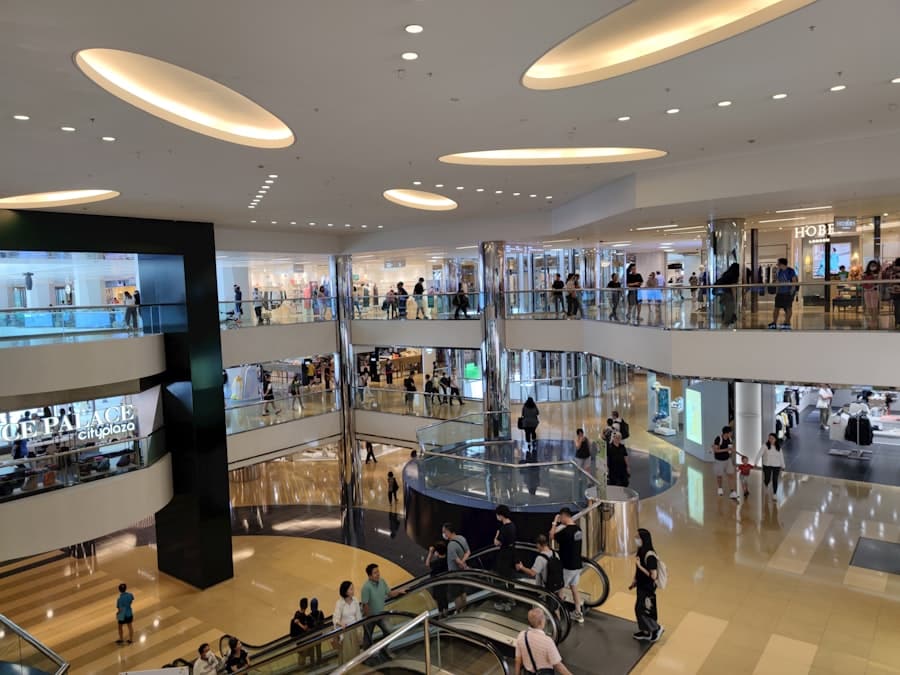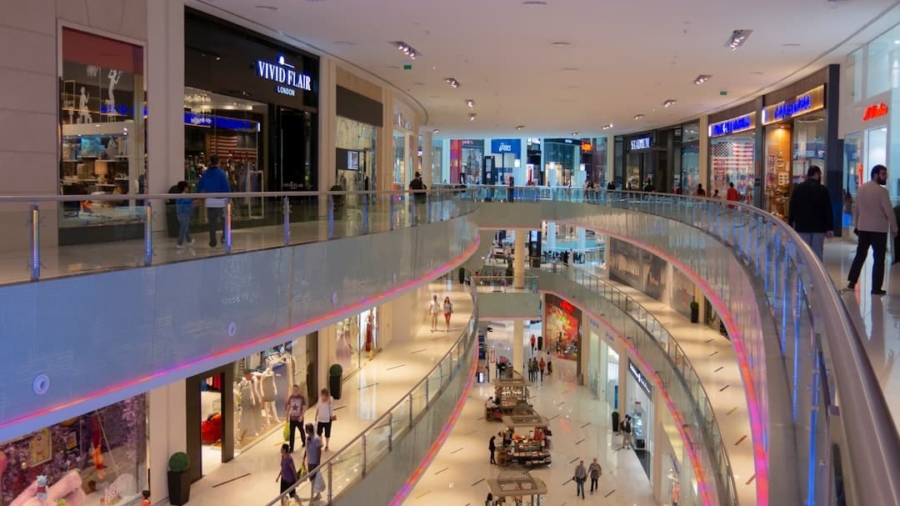The integration of Augmented Reality (AR) technology into shopping malls is a defining characteristic of the evolution of retail in smart cities. As urban areas increasingly adopt smart technologies, the traditional shopping experience is being transformed into a more interactive and engaging environment. AR-enabled shopping malls are emerging as a response to the growing demand for innovative retail experiences that cater to tech-savvy consumers.
These malls leverage AR to create immersive environments where shoppers can interact with products in ways that were previously unimaginable. For instance, a shopper can visualize how a piece of furniture would look in their home or try on clothes virtually without stepping into a fitting room. The rise of AR-enabled shopping malls is also driven by the need for retailers to differentiate themselves in an increasingly competitive market.
With e-commerce gaining significant traction, brick-and-mortar stores are compelled to offer unique experiences that cannot be replicated online. Smart cities, characterized by their advanced infrastructure and connectivity, provide the perfect backdrop for this transformation. Malls equipped with AR technology not only enhance the shopping experience but also serve as social hubs where consumers can gather, interact, and engage with brands in a dynamic setting.
This shift towards AR is indicative of a broader trend where technology is seamlessly integrated into everyday life, making shopping not just a transaction but an experience.
Key Takeaways
- AR-enabled shopping malls are on the rise in smart cities, offering a new way for consumers to shop and interact with brands.
- AR technology is enhancing the shopping experience by providing interactive and immersive experiences for consumers, leading to increased engagement and sales.
- Navigating AR-enabled shopping malls offers a new way to shop, with features like interactive maps, virtual try-on, and personalized recommendations.
- The impact of AR on retailers and brands in smart cities is significant, as it allows for targeted advertising, improved customer engagement, and data-driven insights.
- The future of AR-enabled shopping malls holds exciting possibilities, including advanced AR features, seamless integration with mobile devices, and enhanced smart city development opportunities.
How AR Technology is Enhancing the Shopping Experience
AR technology enhances the shopping experience by bridging the gap between the digital and physical worlds. One of the most significant advantages of AR is its ability to provide real-time information and interactive content that enriches the consumer’s journey. For example, shoppers can use their smartphones or AR glasses to scan products and access detailed information such as pricing, reviews, and even tutorials on how to use the item.
Moreover, AR technology allows for gamification of the shopping experience, making it more engaging and enjoyable.
For instance, a mall might host an AR treasure hunt where participants use their devices to find virtual items hidden throughout the space. This not only drives foot traffic but also fosters a sense of community among shoppers as they share their experiences and compete for rewards. By transforming shopping into an interactive adventure, AR technology significantly enhances customer satisfaction and loyalty.
Navigating AR-Enabled Shopping Malls: A New Way to Shop

Navigating AR-enabled shopping malls introduces a novel approach to how consumers interact with retail spaces. Traditional navigation methods often rely on static maps or signage, which can be confusing and inefficient. In contrast, AR technology offers dynamic navigation solutions that guide shoppers through the mall in real-time.
Using their smartphones or AR devices, consumers can receive personalized directions to their desired stores or products, complete with visual overlays that highlight pathways and points of interest. Additionally, AR navigation can be tailored to individual preferences and shopping habits. For example, if a shopper frequently visits certain stores or has specific interests, the AR system can prioritize those locations and suggest relevant promotions or events happening nearby.
This level of personalization not only enhances the shopping experience but also encourages consumers to explore new areas of the mall they might not have considered otherwise. As shoppers become more familiar with their surroundings through AR navigation, they are likely to spend more time in the mall, increasing overall engagement and sales for retailers.
The Impact of AR on Retailers and Brands in Smart Cities
The implementation of AR technology in shopping malls has profound implications for retailers and brands operating within smart cities. One of the most significant impacts is the ability to collect and analyze consumer data in real-time. By tracking how shoppers interact with AR features—such as which products they engage with most frequently or how long they spend in certain areas—retailers can gain valuable insights into consumer behavior.
This data can inform marketing strategies, inventory management, and even product development, allowing brands to tailor their offerings to meet the evolving needs of their customers. Furthermore, AR technology enables brands to create more compelling marketing campaigns that resonate with consumers on a deeper level. For instance, a cosmetics brand might use AR to allow customers to virtually try on makeup before making a purchase.
This not only enhances the customer experience but also reduces return rates, as consumers are more likely to be satisfied with their choices when they can visualize them beforehand. Additionally, brands can leverage AR for storytelling, creating immersive narratives that engage consumers emotionally and foster brand loyalty. In this way, AR serves as a powerful tool for differentiation in a crowded marketplace.
The Future of AR-Enabled Shopping Malls: What to Expect
As technology continues to advance, the future of AR-enabled shopping malls looks promising and full of potential. One anticipated development is the increased integration of artificial intelligence (AI) with AR systems. AI algorithms can analyze vast amounts of consumer data to provide even more personalized experiences, predicting what products shoppers might be interested in based on their past behaviors and preferences.
This could lead to hyper-targeted marketing efforts that enhance customer engagement and drive sales. Moreover, we can expect to see further innovations in hardware that support AR experiences. As devices become more sophisticated and affordable, more consumers will have access to AR technology, making it a standard part of the shopping experience rather than a novelty.
Retailers may also invest in creating dedicated AR zones within malls where shoppers can engage with cutting-edge technology in unique ways—such as virtual reality experiences or interactive displays that respond to user input. The evolution of AR-enabled shopping malls will likely reflect broader trends in consumer behavior, emphasizing convenience, personalization, and immersive experiences.
Overcoming Challenges and Barriers in Implementing AR Technology in Shopping Malls

Despite its potential benefits, implementing AR technology in shopping malls is not without challenges. One significant barrier is the cost associated with developing and maintaining AR systems. Retailers must invest in both hardware and software solutions while also ensuring that staff are trained to assist customers with these new technologies.
For smaller retailers or those operating on tight margins, these costs can be prohibitive, leading to disparities in access to AR capabilities among different brands. Another challenge lies in consumer adoption of AR technology. While younger generations may be more inclined to embrace new technologies, older consumers may be hesitant or unfamiliar with using AR applications.
Retailers must therefore focus on educating their customers about the benefits of AR and providing user-friendly interfaces that make it easy for everyone to engage with these innovations. Additionally, privacy concerns surrounding data collection must be addressed transparently to build trust among consumers who may be wary of how their information is being used.
The Role of AR in Creating Personalized and Immersive Shopping Experiences
AR plays a crucial role in crafting personalized and immersive shopping experiences that resonate with consumers on multiple levels. By leveraging data analytics and user preferences, retailers can create tailored experiences that cater specifically to individual shoppers’ needs and desires. For instance, an apparel store might use AR technology to recommend outfits based on a customer’s previous purchases or browsing history, allowing for a more curated shopping experience that feels uniquely personal.
Immersion is another key aspect where AR excels; it transforms passive shopping into an active exploration of products and brands. Shoppers can engage with virtual elements that enhance their understanding of products—such as 3D visualizations or interactive demonstrations—making them feel more connected to what they are purchasing. This level of engagement not only increases customer satisfaction but also fosters brand loyalty as consumers develop a deeper emotional connection with the products they choose.
Exploring the Potential of AR-Enabled Shopping Malls for Smart City Development
The potential of AR-enabled shopping malls extends beyond enhancing individual retail experiences; they also play a significant role in the broader context of smart city development. As urban planners seek innovative solutions to improve city living, integrating advanced technologies like AR into public spaces can contribute to more vibrant and engaging environments. Shopping malls equipped with AR capabilities can serve as community hubs where residents gather not just for shopping but for social interaction, entertainment, and cultural events.
Furthermore, these malls can act as testing grounds for other smart city initiatives—such as sustainable practices or smart transportation solutions—by providing real-time data on foot traffic patterns and consumer behavior. This information can inform urban planning decisions that prioritize accessibility and sustainability while fostering economic growth within local communities. As cities continue to evolve into smart ecosystems, the role of AR-enabled shopping malls will be pivotal in shaping how residents interact with their urban environments and each other.
In the rapidly evolving landscape of smart cities, augmented reality (AR) is playing a pivotal role in transforming shopping experiences. The article “Exploring AR-Enabled Shopping Malls in Smart Cities” delves into how AR technology is being integrated into retail environments to enhance customer engagement and streamline shopping processes. A related article that complements this discussion is the Samsung Galaxy S23 Review, which explores the capabilities of modern smartphones that support AR applications. As smartphones become more advanced, they serve as essential tools for consumers to interact with AR features in shopping malls, making the Samsung Galaxy S23 a relevant device in this technological shift.
FAQs
What is AR-enabled shopping in smart cities?
AR-enabled shopping in smart cities refers to the use of augmented reality technology in shopping malls located in smart cities. This technology allows shoppers to use their smartphones or AR glasses to access additional information, virtual try-on features, interactive maps, and other AR-enhanced experiences while shopping.
How does AR technology enhance the shopping experience in smart cities?
AR technology enhances the shopping experience in smart cities by providing interactive and personalized experiences for shoppers. It allows them to virtually try on clothing and accessories, access product information, receive personalized recommendations, and navigate the shopping mall more efficiently.
What are the benefits of AR-enabled shopping in smart cities?
The benefits of AR-enabled shopping in smart cities include a more engaging and personalized shopping experience, improved navigation within the shopping mall, access to additional product information, virtual try-on capabilities, and the ability to seamlessly blend the physical and digital shopping experience.
How does AR technology contribute to the development of smart cities?
AR technology contributes to the development of smart cities by enhancing the retail experience, promoting innovation and technology adoption, and creating a more connected and interactive shopping environment. It also supports the overall goal of creating more sustainable and efficient urban spaces.
What are some examples of AR-enabled shopping experiences in smart cities?
Examples of AR-enabled shopping experiences in smart cities include virtual try-on features for clothing and accessories, interactive maps and navigation tools, AR-enhanced product information and demonstrations, and personalized recommendations based on shopper preferences and behavior.

